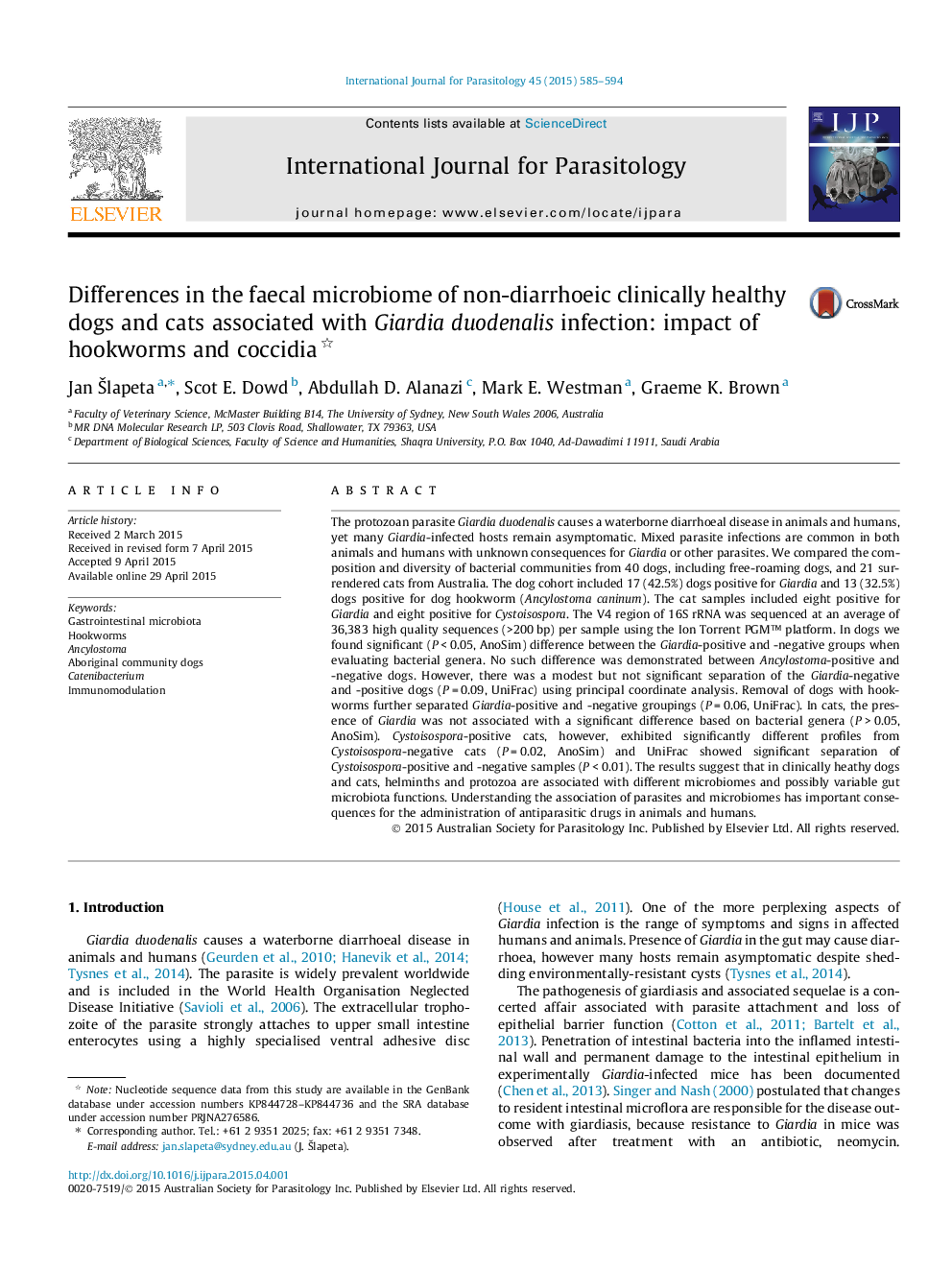| Article ID | Journal | Published Year | Pages | File Type |
|---|---|---|---|---|
| 2436012 | International Journal for Parasitology | 2015 | 10 Pages |
•Faecal microbiome in animals naturally infected with protozoan parasites.•Only Giardia-infected dogs exhibit significantly different community structure.•Giardia-positive cats displayed significantly more OTUs than Giardia-negative cats.•Association of Giardia and dog hookworms in dogs viewed through microbiome.
The protozoan parasite Giardia duodenalis causes a waterborne diarrhoeal disease in animals and humans, yet many Giardia-infected hosts remain asymptomatic. Mixed parasite infections are common in both animals and humans with unknown consequences for Giardia or other parasites. We compared the composition and diversity of bacterial communities from 40 dogs, including free-roaming dogs, and 21 surrendered cats from Australia. The dog cohort included 17 (42.5%) dogs positive for Giardia and 13 (32.5%) dogs positive for dog hookworm (Ancylostoma caninum). The cat samples included eight positive for Giardia and eight positive for Cystoisospora. The V4 region of 16S rRNA was sequenced at an average of 36,383 high quality sequences (>200 bp) per sample using the Ion Torrent PGM™ platform. In dogs we found significant (P < 0.05, AnoSim) difference between the Giardia-positive and -negative groups when evaluating bacterial genera. No such difference was demonstrated between Ancylostoma-positive and -negative dogs. However, there was a modest but not significant separation of the Giardia-negative and -positive dogs (P = 0.09, UniFrac) using principal coordinate analysis. Removal of dogs with hookworms further separated Giardia-positive and -negative groupings (P = 0.06, UniFrac). In cats, the presence of Giardia was not associated with a significant difference based on bacterial genera (P > 0.05, AnoSim). Cystoisospora-positive cats, however, exhibited significantly different profiles from Cystoisospora-negative cats (P = 0.02, AnoSim) and UniFrac showed significant separation of Cystoisospora-positive and -negative samples (P < 0.01). The results suggest that in clinically heathy dogs and cats, helminths and protozoa are associated with different microbiomes and possibly variable gut microbiota functions. Understanding the association of parasites and microbiomes has important consequences for the administration of antiparasitic drugs in animals and humans.
Graphical abstractFigure optionsDownload full-size imageDownload high-quality image (182 K)Download as PowerPoint slide
